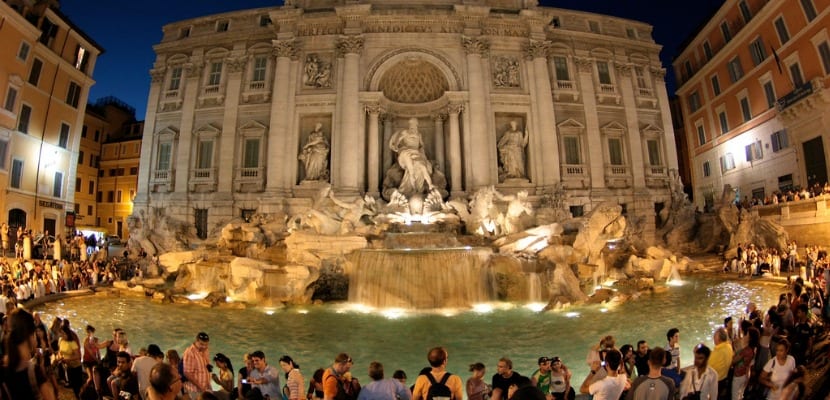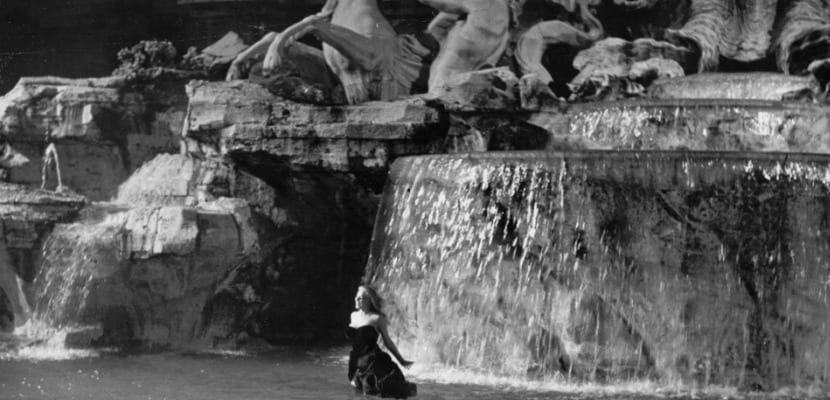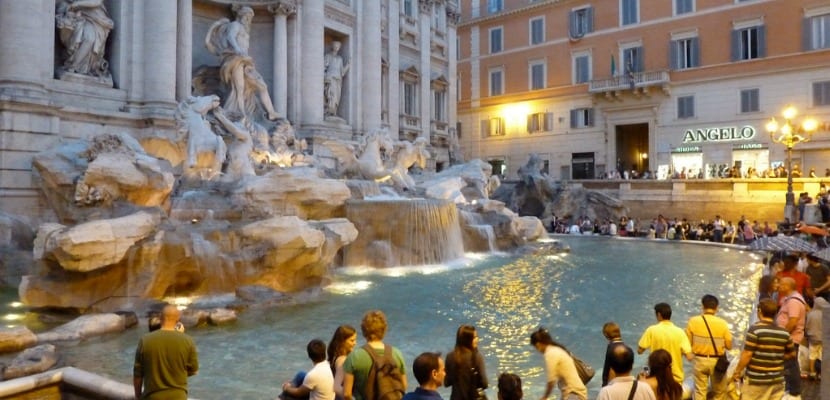
There is no doubt that the Trevi Fountain It is the most beautiful monumental fountain in the world, especially now that the fashion firm Fendi has restored it to its original splendor after extensive restoration work. The passage of time had managed to make a dent in the monument and its state of conservation was not going through its best moment. The same happened with several iconic buildings in Rome such as the Colosseum or the Claudia aqueduct but thanks to the patronage of private sponsors, many of them have already recovered their former glory.
Tourists and Romans had long noticed the deterioration of the city. To prevent the situation from worsening, authorities and sponsors went to work to stop the damage. The task was not easy at all, since Rome is a large city full of ancient and precious monuments, but the inauguration of the new Trevi Fountain is proof that it can be achieved with effort, time and money.
This monument was built in 1762 but its origins go back centuries. Next, we will tell you the story of this beautiful Roman fountain. Do not miss it!
History of the Trevi Fountain
In classical Rome there was another fountain, of which there are still traces, in the place where the Trevi Fountain stands today. It was built at the end of the path of an aqueduct called Aqua Virgo that supplied water to the capital of the empire.
The Roman custom of building a beautiful and handsome fountain at the end of the aqueducts that brought water to the city was resurrected in the 1453th century during the Renaissance. In XNUMX, Pope Nicholas V repaired the Aqua Virgo aqueduct and the fountain that was built at the end was a simple font, designed by the architect Leon Battista Alberti, to announce the arrival of water.
In 1629, Pope Urban VIII asked Gian Lorenzo Bernini to renovate the fountain when he found it dull and unoriginal. However, the project was abandoned when the pontiff died. In 1730 Pope Clement XII entrusted Nicola Salvi with the project. The Fontana di Trevi is an allegory of the facets of the sea: the rough sea and the peaceful sea. The works began in 1732 and ended in 1762 with Giuseppe Pannini.
Restoration works of the Trevi Fountain

The monumental fountain underwent a first restoration in 1998, in which the stone was cleaned and closed-circuit pumps and oxidizers were installed.
In 2012, several pieces of stone were detached from the capitals and the friezes on the façade. The incident worried the city authorities and for this reason they emptied the fountain and carried out inspection tasks to check the status of the monument. Many cracks were discovered in the stone, as well as fungus and mold.
It was then that the mayor of Rome announced that the Fontana di Trevi would need a global restoration. In principle, an emergency intervention was carried out that cost more than 300.000 euros but the public administration could not cope with the almost three million euros that it was estimated that the complete restoration would cost. So the city council began looking for private sponsors who were willing to finance the works. Finally, it was the fashion firm Fendi who offered to pay the costs of the restoration. The result is unbeatable.
During the restoration works, some steps were established so that tourists could go up to see the fountain even though it was surrounded by scaffolding.
The Trevi Fountain in the cinema

Thus, the Trevi Fountain regained its splendor and continues to be that symbolic monument into which films such as 'Tottotruffa 62', 'Elsa and Fred' and 'La dolce vita' turned it. It was in Fellini's tape that one of the most important scenes in cinema that has remained etched in the memory of any cinephile takes place: that of the sensual Anita Ekberg bathing in the fountain while inviting Marcello Mastroianni to follow her.
The myth of the Trevi Fountain
Another film, 'Three Coins in the Fountain' created the myth of throwing a coin into the waters of the Trevi Fountain to return to Rome. For this to work, the coin must be tossed with the right hand over the left shoulder. As a curiosity, each year approximately one million euros from the source which since 2007 have been used for charitable purposes.

Where to find the Trevi Fountain
One of the most outstanding features of the Trevi Fountain is the contrast between the monumentality of the fountain and the narrowness of the square in which it is located. It is so hidden between alleys that it is hard to find it. Upon reaching the Piazza di Trevi in Rome, the tourist is strongly impressed when he comes face-to-face with it.
The visit to the Trevi Fountain takes about half an hour. We recommend that you stop by at least a couple of times: once during the day and once at night to see the magic that it gives off illuminated and contemplate it more calmly.